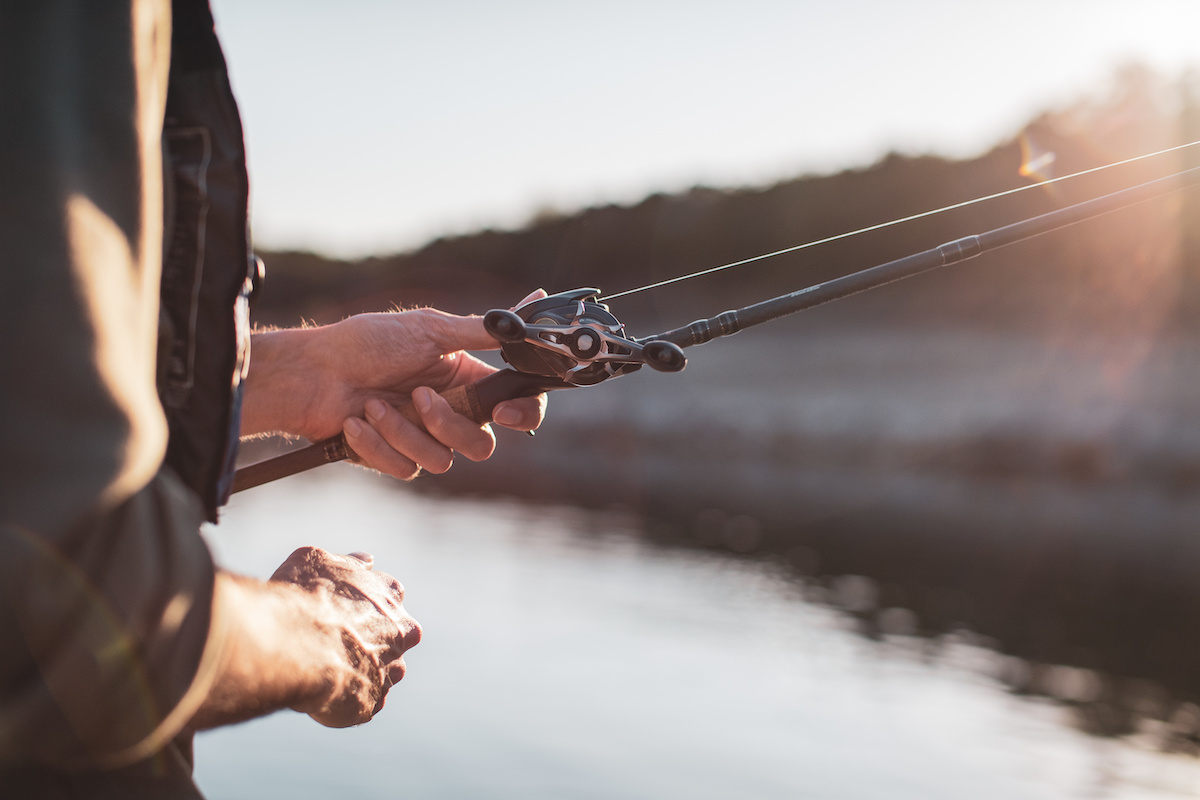Chain Pickerel
Esox niger
AKA: chainsides, jackpike, pike, jackfish
Chain pickerel are aggressive fighters once hooked, thus making them an exciting catch. They are active through the winter, under the ice, so they can be caught by ice anglers.
-
Distinguishing Markings:
The chain pickerel is distinguished from its relatives, the northern pike and muskellunge, by its prominent chain-like markings on a contrasting lighter green background. The fish is characterized by a slender body that is somewhat compressed and deepest near the middle. Its head is large, naked, and depressed above, with fully scaled cheek and gill covers. Chain pickerel have a conspicuous dark bar beneath each eye and the pupil of the eye is yellow. The snout is long, broad, and rounded with a large mouth and a sharp set of teeth. The lower jaw extends further forward than the upper jaw and is equipped with four sensory pores on the underside. The dark upper side is interrupted by light vertical bars. A large dorsal fin is located back towards the forked caudal fin.
-
Size:
Chain pickerel are the smallest gamefish in the pike family. They can live for 10 years, reach a length of 3 feet and weigh 7 pounds or more.
-
Distribution:
The chain pickerel’s original range was Atlantic and Gulf Coast tributaries, but the fish has been introduced elsewhere. Chain pickerel are distributed along the Atlantic coast of North America from New Brunswick and Nova Scotia south to Florida. The species is found in the Mississippi River drainage from the Gulf Coast as far north as Illinois and Indiana, and may be found in Gulf drainages as far west as the Sabine and Red rivers in Texas.
-
Habitat:
Pickerel are attracted to weedy pools in streams, ponds, lakes and rivers. Their ambush style of feeding requires cover such as submerged aquatic vegetation, tree limbs or man-made structures such as pilings, rip-rap, or sunken ships. Pickerel tend to be solitary fish, lurking hidden in the aquatic vegetation, waiting for prey to swim or drift by.
-
Food:
Pickerel are sight-oriented predators and are predominately active during the day. They are quite opportunistic feeders and strike with incredible speed when some unwary prey swim nearby. The main diet of the pickerel consists of small fish, crayfish, frogs, mice, newts and insects.
-
Spawning:
Chain pickerel spawn in the early spring when water temperatures approach 50 degree F. Eggs are adhesive ribbon-like masses attached to submerged vegetation or structure. The female lays up to 50,000 eggs but does not guard them. Pickerel may reach 14 inches by their third year and become sexually mature by their fourth.
-
Fishing Tips:
Pickerel are excellent sport fish sought after by diehard anglers year-round, even in the coldest part of the winter. They are good fighters on light spinning and fly tackle and will readily take a live minnow, streamer fly, spoon, spinner or a variety of other lures. A steel or heavy monofilament leader will help keep their sharp teeth from cutting the line.

